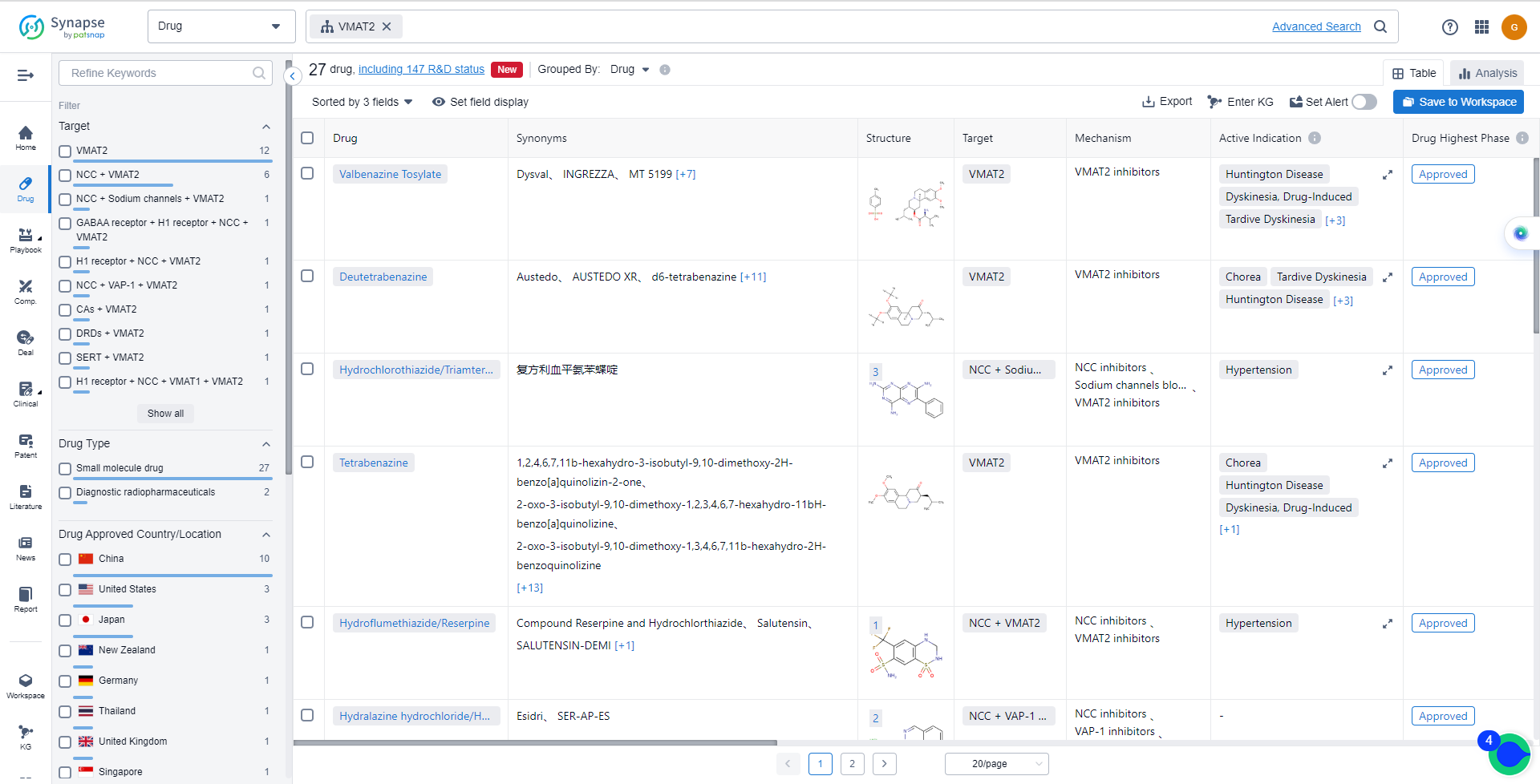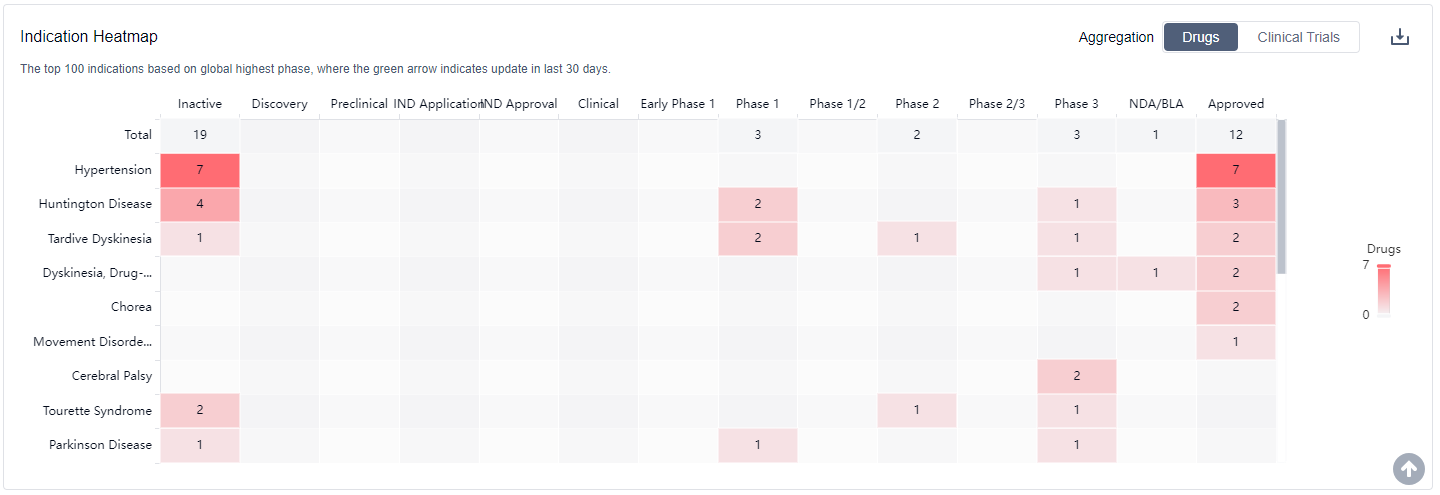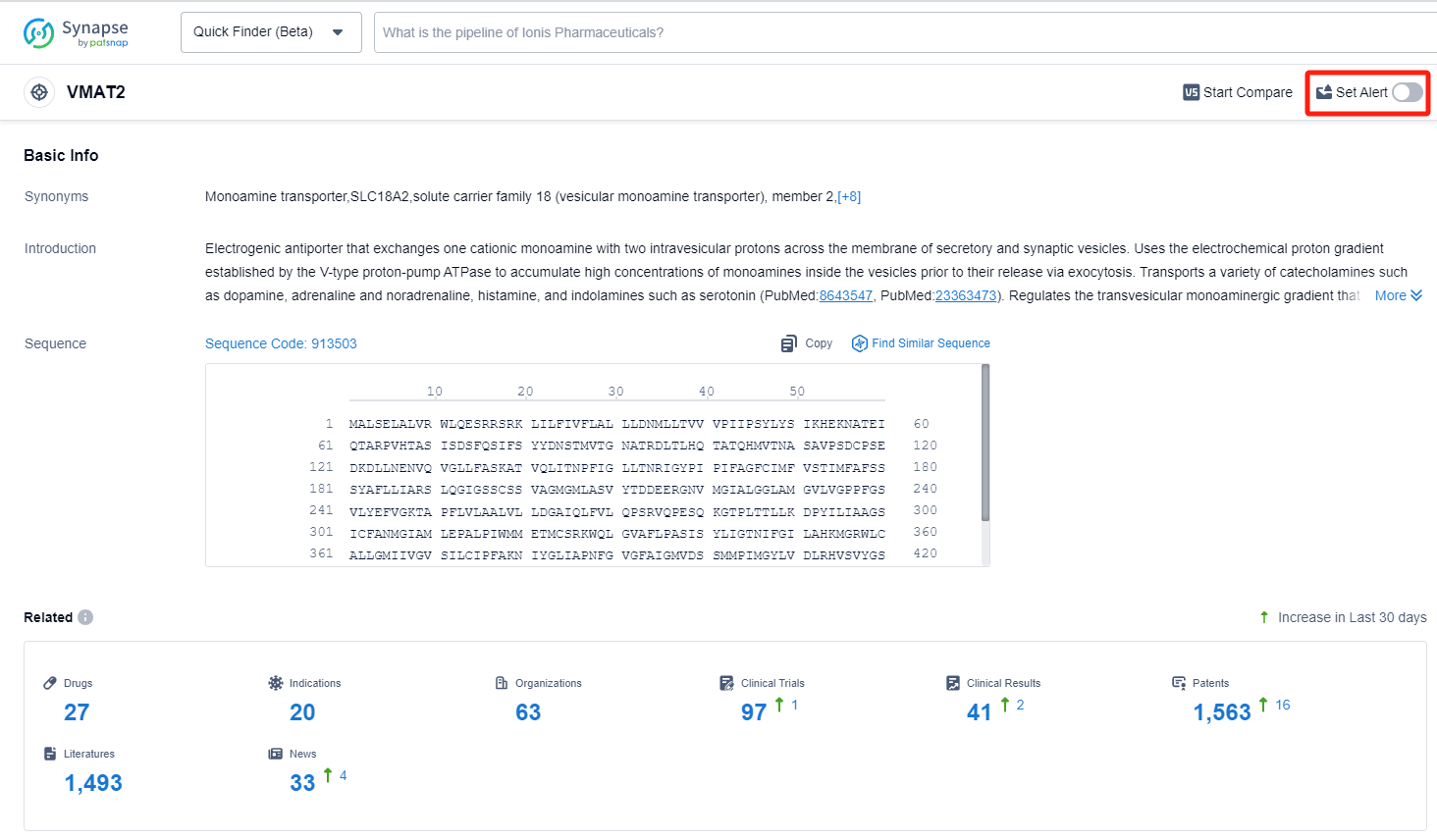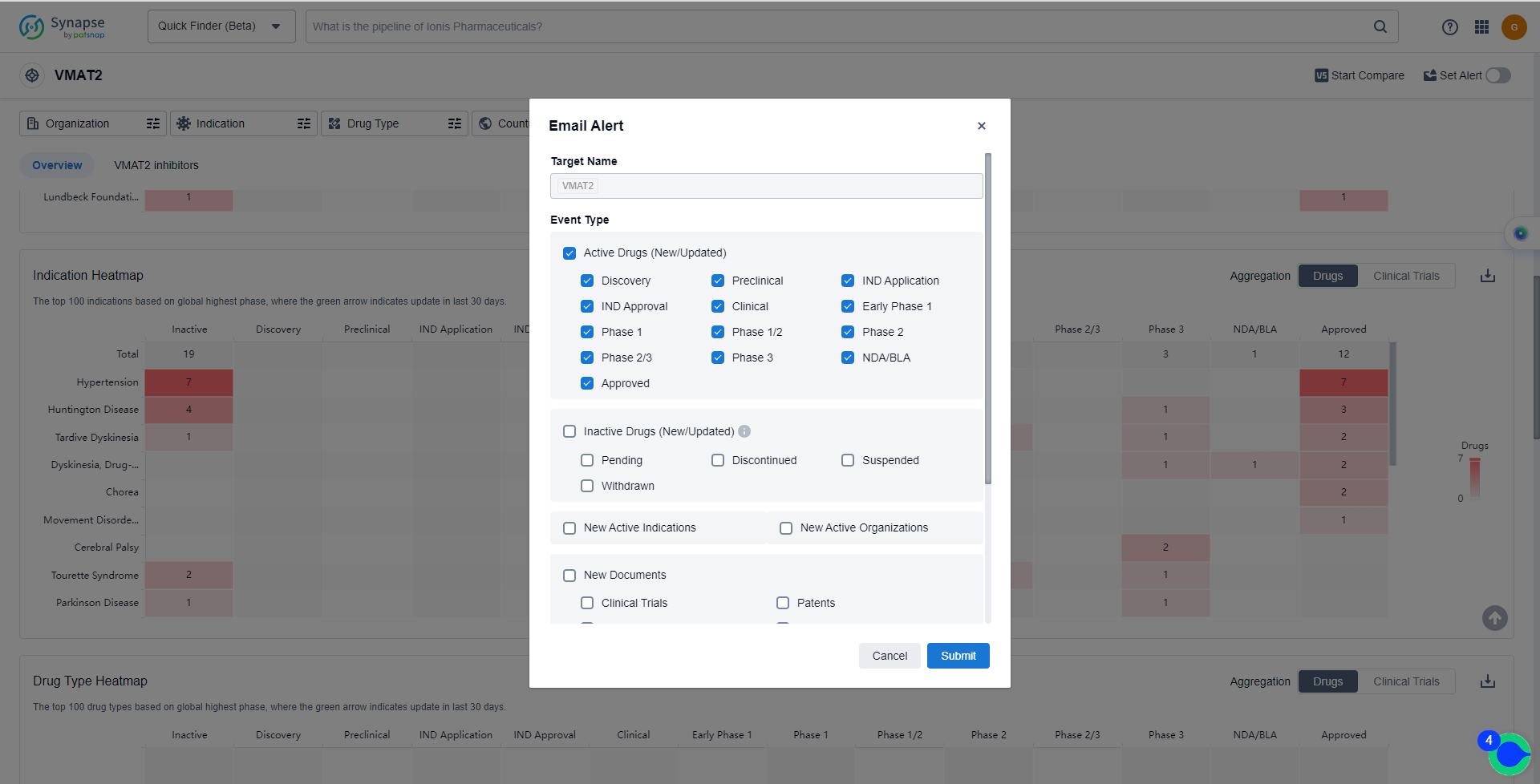What are VMAT2 inhibitors and how do you quickly get the latest development progress?
VMAT2, or vesicular monoamine transporter 2, is a protein found in the human body that plays a crucial role in the regulation of neurotransmitters. It is primarily located in the synaptic vesicles of neurons and is responsible for packaging and transporting monoamine neurotransmitters, such as dopamine, serotonin, and norepinephrine, into these vesicles. By doing so, VMAT2 helps maintain the balance of these neurotransmitters in the brain, which is essential for proper neuronal communication and overall mental health. Dysfunction or alterations in VMAT2 activity have been associated with various neurological and psychiatric disorders, making it an important target for drug development in the pharmaceutical industry.
In mammals, there are two members of the VMAT family, VMAT1 (SLC18A1) and VMAT2 (SLC18A2). VMAT1 protein is only expressed in peripheral neurosecretory cells, while VMAT2 protein is widely expressed in the central and peripheral nervous systems and undertakes the main vesicular monoamine transport function. Therefore, VMAT2 is currently the main target of drugs for the treatment of various diseases related to monoamine abnormalities.
The analysis of target VMAT2 reveals a competitive landscape with multiple companies actively developing drugs. Neurocrine Biosciences, Inc. is leading in terms of the highest stage of development. The indications with the most approved drugs include hypertension, Huntington Disease, and Tardive Dyskinesia. Small molecule drugs and diagnostic radiopharmaceuticals are progressing rapidly under the target VMAT2. China, the United States, and Japan are the countries with the highest development progress. Overall, the target VMAT2 shows promise for the development of innovative drugs and has a diverse range of therapeutic applications.
How do they work?
VMAT2 inhibitors are a type of medication that target and inhibit the vesicular monoamine transporter 2 (VMAT2) protein. From a biomedical perspective, VMAT2 is a protein found in the membranes of synaptic vesicles in neurons. It plays a crucial role in the packaging and transport of neurotransmitters, such as dopamine, serotonin, and norepinephrine, from the cytoplasm into the vesicles.
By inhibiting VMAT2, these medications reduce the uptake of neurotransmitters into the vesicles, leading to decreased release of these neurotransmitters into the synaptic cleft. This ultimately affects the signaling between neurons and can have various effects depending on the specific neurotransmitter involved.
In the field of biomedicine, VMAT2 inhibitors have been primarily studied and used in the treatment of certain neurological and psychiatric disorders. For example, these inhibitors have shown efficacy in managing symptoms of conditions like Parkinson's disease, schizophrenia, and tardive dyskinesia. By modulating the release of neurotransmitters, VMAT2 inhibitors can help regulate the imbalances associated with these disorders and improve symptoms.
It's important to note that VMAT2 inhibitors should only be used under medical supervision, as they can have significant effects on neurotransmitter levels and may interact with other medications. The specific mechanism of action and potential side effects may vary depending on the particular VMAT2 inhibitor being used. Therefore, it is crucial to consult a healthcare professional for accurate information and guidance regarding the use of VMAT2 inhibitors.
List of VMAT2 Inhibitors
The currently marketed VMAT2 inhibitors include:
- Valbenazine Tosylate
- Deutetrabenazine
- Tetrabenazine
- Hydroflumethiazide/Reserpine
- Deserpidine
- Reserpine
- Hydrochlorothiazide/Triamterene/Dihydralazine Sulfate/Reserpine
- Hydralazine hydrochloride/Hydrochlorothiazide/Reserpine
- Reserpine/Dihydralazine Sulfate
- Florbenazine F18
For more information, please click on the image below.
What are VMAT2 inhibitors used for?
VMAT2 inhibitors are used in the treatment of certain neurological and psychiatric disorders. For more information, please click on the image below to log in and search.
How to obtain the latest development progress of VMAT2 inhibitors?
In the Synapse database, you can keep abreast of the latest research and development advances of VMAT2 inhibitors anywhere and anytime, daily or weekly, through the "Set Alert" function. Click on the image below to embark on a brand new journey of drug discovery!








